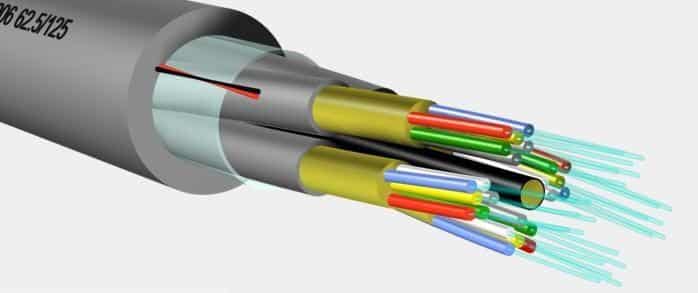to analog. But what is bandwidth? Let’s know; what internet bandwidth is, its benefits and drawbacks, etc.
What is Bandwidth?
It is the highest data rate transmitted over an internet connection in a certain period of time. We often assume bandwidth is a definition of internet speed but is actually the volume of information sent over the internet connection from one point to another. It is measured in bit rate per second, and its unit is Mbps or megabits per second. Therefore, it is the amount of data over a connection in a unit period of time.
Bandwidth Meaning:
It means a range of frequencies we use to transmit a signal within a given band.
What is The Bandwidth Limit?
It is the data amount sent to the website visitors. Every 30 days, it is refreshed. Hence, the number of websites won’t affect the limit.
What is bandwidth Usage?
It must have a network’s transmission capacity to forward data packets from the source to the destination computer.
What is Bandwidth Speed?
Internet speed of a minimum of 25 Mbps is ideal for Wi-Fi. It ensures that many people get the right amount of data on the Wi-Fi network while many devices use the same connection simultaneously. A 100 Mbps speed is better for larger households.
Bandwidth vs. Throughput:
Throughput means the amount of information delivered in a specific time. Therefore, while the other means the maximum data amount, throughput indicates how much information makes it to its destination.
What is DSL?
DSL stands for Digital subscriber line, a technology we use to transmit digital data over telephone lines. It indicates the digital subscriber line in telecommunications marketing. We generally use the technology for web access.
What is Fiber Internet?
Fiber-optic communication transmits information from one location to another. Hence, it sends pulses of infrared light through an optical fiber. In this case, the light is a carrier wave modulated to carry information.
Types of bandwidth:
Different service classes exist for business communications, and every class has many service options. A few are more useful for specific business tasks than others for internet bandwidth, latency, and throughput. Hence, the major classes are Public Wireless, Public Broadband, Private Networks, and hybrid Software-Defined Wide Area Networks (SD-WAN).
Public Wireless:
LTE, Long Term Evolution cellular service, represents 4G and satellites. These are more costly compared to terrestrial services. In addition, these are the only choices in locations where cable providers can’t give network services. Hence, you should know that 4G/LTE and satellite are shared services. Therefore, you can buy them in packages of up to 100 Mbps speed. However, it includes data caps above which prices rise significantly. Besides, these are viable failover options while you use them on a limit. Hence, a problem is high latency, especially on satellite connections. 5G is the recent generation of public wireless. It is available now in chosen areas.
Public Broadband:
Broadband means broad bandwidth. You can get top-speed network connections via cable or telephone companies. It uses several data channels to transfer large amounts of information. Besides, there are famous broadband services, including Digital Subscriber Line (DSL), cable, and fiber. Its offerings vary. The reason is that it relies on the service provider. It includes DSL on the low end (up to 40 Mbps), cable in the middle (up to 300 Mbps), and fiber offerings at the top (up to 10 Gbps). Usually, cable & DSL services are asymmetrical.
The low cost of high data transfer rate is the major advantage of broadband. However, tradeoffs include protection and reliability. In this case, you should know that you can encounter quality problems & outages with a public broadband connection. If its quality suffers, Voice over IP (VoIP) calls drop, and Virtual Desktop Infrastructure (VDI) disconnects. But most business users can’t accept it. In addition, these are fine with minor or infrequent outages for low service costs.
Private Networks:
These are not shared. Therefore, people can buy them through carriers as professional business services with Service Level Agreements (SLA). Hence, you should know that it includes Quality of Service (QoS) terms. That’s why contracts are more costly than the best effort of public broadband services. In addition, these usually have durations of 36 to 60 months.
MPLS stands for Multiprotocol Label Switching. It is a process used to carry data for high-performance & private telecommunications networks. Besides, MPLS can leverage encapsulated data. In addition, it doesn’t have any link to the public Internet. That is why it can offer a secure transport mode. It may use different technologies employing T1 (1.54 Mbps) on the low end and fiber or Metro Ethernet (up to 10 Gbps) on the high end.
It was the most effective way to ensure point-to-point connectivity and reliable network performance. But when broadband services and SD-WAN technology began to be available, these became the best way.
A wireless, private network service is Microwave which can provide symmetrical network bandwidth up to 500 Mbps. You can use it in fair weather conditions. But it is better not to use it in the rain, snow, and low-flying clouds.
Services are available differently in rural & urban areas and different city parts. Carriers can provide various packages with varying QoS guarantees, contract pricing, and terms. In this case, you can take help from a telecom broker or managed service provider. It allows you to navigate the ins and outs of services in your area. Thus, it can meet your requirements.
Software-Defined Wide Area Networks (SD-WAN):
A few SD-WAN technologies allow you to combine any service from any provider. Thus, it can make a resilient public/private network. In addition, you can enjoy multiple benefits if you have two or more links to the Internet.
How Much Bandwidth Do You Need?
You will need more data while using many devices, or many people are using it at once. Streaming, gaming, and other high-capacity activities need specific bandwidth speeds to get the ultimate experience without excessive lag. If your internet provider can offer a higher data rate, you can enjoy things more quickly.
FCC offers some guidelines for Mbps required based on digital activity. For example, suppose you want to stream 4K content. Hence, you need 25 Mbps at the very minimum and 4-25 Mbps for telecommuting or gaming.
What is the Bandwidth Requirement?
The channel bandwidths should transmit different signals with the help of different processing schemes. You can express each signal as a sum of sinusoidal components of different frequencies.
How do you find Your Bandwidth?
If you are willing to check the home internet speed, you should follow these steps:-
- Your first task is to connect the computer to the router using an Ethernet cable.
- After that, you should open the internet browser.
- Then, visit www.speedtest.net.
- At last, tap on the option “Go.”
Why is Bandwidth Important?
It lets you know the speed of loading a web page on your browser. That’s why it is a vital factor to consider while selecting a platform for your website.
Usually, a website loaded with heavy images and long videos must come with a higher bandwidth of 25 Mbps or above. On the flip side, websites with bodies of text will require less. In addition, when you have a fast internet connection, it asks you to upload your products more quickly. Thus, a high bandwidth can improve the quality and user experience of the site.
Does More Bandwidth Mean Faster Internet?
It can measure the time required to transport data from one location to another. Therefore, more bandwidth will boost internet speeds. High bandwidth usually correlates to quicker internet speeds.
How do Your Check Your Internet Bandwidth?
If you are willing to check your internet bandwidth, you should visit a bandwidth-measuring site. This site will ask you the time taken by your Internet to upload and download and transport information. The test result appears at the end of the test and lets you know if the bandwidth is good or bad.
What Causes Low Internet Bandwidth?
Some things exist which could affect your bandwidth. For example, more people using a similar network or device can cause low internet bandwidth. In addition, another factor is the quality of your provider and how good your local area is for internet signals.
What are Some Common Bandwidth Issues?
The business has become reliant on the web for multiple systems, whether online storage or VoIP. But, while network speed might be quicker, bandwidth hogs remain a problem in the office.
-
Video calls and VoIP:
Communication is essential for your business. However, remember that the VoIP system runs the day-to-day activities in your office. Therefore, you should keep the VoIP in a separate space. Consequently, it will not share similar resources as other systems.
Ensure your business helps you to communicate seamlessly using VoIP phone systems. In addition, Voice calls will not consume huge bandwidth unless you run a call center or recruitment agency.
-
Internet and Background Usage:
The speed will decrease when you run more programs or internet tasks. Hence, the reason is that the data requirements of your download usage exceed the rate of the maximum amount.
Background usage is also one of the major reasons. All uploads and downloads occurring background on the pc can reduce the speed. It is software that updates automatically, like system updates and antivirus programs; if you are willing, power off automatic updates in the program settings.
-
File Sharing:
Peer-to-peer file sharing uses too much bandwidth. As a result, sending and downloading big files can wreak havoc on your bandwidth. As a result, the connection might suffer. In addition, the business will be open to cyber attacks if someone downloads illegal or pirated content through an office connection.
-
Overcrowded Connection:
If many employees use one connection, more devices start using more bandwidth. As a result, every device gets its small portion leading to slower data transfer.
How to Improve Your Businesses Bandwidth Speed:
If a business faces inadequate bandwidth, it can affect its regular operations. Usually, different processes are there used to improve it.
-
Upgrade Your Internet Plan:
You should upgrade it to an internet plan with more bandwidth. It is possible to prioritize parts of your plan using packet shipping. You can purchase more to increase it.
-
Clean Up Your Device:
You should close your background apps and remove your cache and malware to clean up your device. In addition, it can free up more space to offer vital bandwidth connections.
-
Use a VPN:
You need to use a virtual private network to avoid throttling. It helps to hide your IP address and encrypt your traffic. As a result, it becomes hard to track. It means your network service provider cannot know what you do online and limits your speed.
-
Limit The Number Of Connected Devices:
You should try to limit the number of devices on your network. If fewer people use the connection at a time, it indicates that bandwidth will not be divided up into smaller parts.
Why Measure Bandwidth?
Multiple reasons exist to measure it. For example, low usable data than the theoretical maximum data means network problems.
Ensuring that any paid connections are living up to their promise is essential. Test it online, like the DSLReports speed test if you are a home user. In addition, you can serve corporate connections by measuring throughput between offices connected by a carrier-leased line connection.
Bandwidth Management:
You should understand which one is used to implement Quality of Service (QoS) controls. After determining, a continuous measurement ensures that users get the needed one.
Bandwidth Throttling: You need to understand the usage patterns. If any application is degrading network performance, you should use tools to limit its amount.
Bandwidth Maximums: A few connections come with a maximum defined data rate. In this case, the real one relies on multiple factors like environment, cabling, and usage. Therefore, it is actually less than the theoretical maximum.
How to Measure Bandwidth:
You should measure it using software or firmware and a network interface. For instance, you can use these tactics, including Test TCP utility (TTCP) and PRTG Network Monitor.
TTCP enables you to measure throughput on an IP network between two hosts. While a host serves as the receiver, the other one is the sender. Every side displays the number of bytes transmitted. In addition, it also shows the time for every packet to complete the one-way trip.
PRTG can offer a graphical interface and charts. These help to measure trends over longer periods. In addition, it can measure traffic between various interfaces. Generally, you should count the whole traffic sent and received across a particular time. After that, you should express the resulting measurement as a per-second number.
In addition, you can measure it by transferring a file, or several files, of known size. Hence, you should count how long the transfer takes. Then, you should convert it into bps by dividing the size of the files by the time required to transfer. In most cases, the network speed tests use the process to compute the connection speed of a user’s PC to the network. You can also define it in different ways depending on the requirements.
Theoretical Maximum:
It means the highest transmission rate under ideal circumstances. But you can’t achieve it in real installations. Usually, you should use the theoretical maximum for comparison to determine how well a connection works than its theoretical maximum potential.
Effective Bandwidth:
It indicates the highest reliable transmission rate. However, this one remains lower than the theoretical maximum. Therefore, you should consider it as the best usable. It is essential to understand the traffic that a connection can support.
Throughput:
It refers to the average rate of successful data transfer. Throughput helps you to understand the usual speed of a connection.
Goodput:
It can measure the useful data you can transfer. But it doesn’t exclude undesirable data like packet retransmissions or protocol overhead. You should divide the file size by the time needed to transfer to compute Goodput.
Total Transfer Method:
It counts all traffic across a time. This one is vital to bill depending on how much it is used.
95th Percentile Method:
You must use the process to avoid having the measurements skewed by spikes in usage. Its idea is to measure the usage over time continuously. After that, you should eliminate the top 5 percent of use. Then, it helps you to bill depending on how much it is used in a time.
It depends over time based on usage and network connections. If you measure one data rate, it will notify you very little. Therefore, you should measure a few while determining averages or trends.
Expressing Bandwidth:
Do you know what is bandwidth measured? People measured it in bits per second and described it as bps. However, today’s networks come with a higher range of data rates than express comfortably using small units. Therefore, it is common to see higher numbers denoted with metric prefixes, such as Mbps (megabits per second), Gbps (gigabits per second), or Tbps (terabits per second).
K = kilo = 1,000 bits
M = mega = 1,000 kilo = 1,000,000 bits
G = giga = 1,000 mega = 1,000,000,000 bits
T = tera = 1,000 giga = 1,000,000,000,000 bits
After terabit, use petabit, exabit, zettabit, and yottabit. Every term refers to an extra power of 10. In addition, you can express it as bytes per second. You should denote it with a capital B. For instance, you should express 10 megabytes per second as 10 MB/s or 10 MBps.
One byte represents eight bits.
Thus, 10 MB/s = 80 Mb/s.
You can use similar metric prefixes with bytes as with bits. Thus, 1 TB/s indicates one terabyte per second.
Conclusion:
After going through this article, you can learn what is bandwidth in networking, how to measure it, why you need to measure it, and other necessary details regarding it. In addition, you will come to know about different types, including their benefits & drawbacks.
Frequently Asked Questions:
- Which bandwidth speed is the fastest?
The quickest internet speed is around 1 gigabit per second in major cities. It is similar to 1,000 megabits per second.
- What is bandwidth in Mbps?
Mbps means megabits per second. Hence, it indicates the download rate of the internet connection.
- Is high bandwidth good?
If you have a higher bandwidth, it means you can achieve a higher data transfer rate. As a result, you can download something quickly. It becomes vital, especially while downloading large files.







